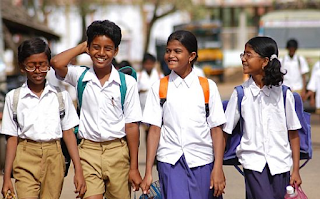
Director: Pandiraj
Music: James Vasanthan
Cast: Kishore, Sri Ram, Pandian, Tharani
Why don’t movies like Pasanga get grand opening or pre-release hype that movies like Aadhavan or Kandasamy get? Why do we rush to the theatre or the DVD shop the moment these 'blockbusters' are released even though we are inherently doubtful about how good these would be? On the other hand, even though we see movies like Pasanga stacked at DVD shelves for quite a while, we hesitate to pick it up until one of our friends strongly recommends it?
We will never know the answers to these questions. We wouldn't need to either because movies like Pasanga will never get such pre-release hype. This is not just Tamil Nadu but is an international phenomenon. Movies like Gran Tornio will never get the openings commanded by Harry Potter or Spider Man. We will often rush to reserve the first day tickets for Harry Potter and end up renting out DVDs of Gran Torino. These are inevitable. What should be heart-warming is that movies like Gran Torino get made and reviewed favourably.
Watching Pasanga – other than the filmic experience it provides – was a similar heart-warming experience because the Tamil Industry – despite rotten manure like Kandasamy raking in crores – allows such movies to be made. The Tamil audience should be thankful to Balu Mahendra not just for the kinds of films he made but for spawning an institution from which directors after directors who are out to transform Tamil Cinema are emerging. Bala, Vetrimaaran, Ameer, Ram, Sasikumar, etc. And these directors are carrying the torch further and seems to be really in a hurry to topple trends. Encouraged perhaps by Sasikumar, Pandiraj, Cheran’s disciple has dared to venture into something unheard of in the Tamil industry: A children’s film.
Pasanga attempts brave storytelling and uses parodied humour as the form of entertainment, a typical Bala instrument. The story revolves around a bunch of kids and their joy, struggle, ordeal and triumphs. There are of course characters who are adults and their life obviously is affected by what is happening to the children in the movie. The characters are real, grounded and well realised. But many situations are melodramatic. This combination of pitting real characters against the melodrama, a technique invented by Barathiraja, is actively employed here to create some entertaining moments. A tad clichéd climax brings on the necessary conclusion to complete the experience. The charged music with constant reference to 'mass-entertainer' elements add to the required entertainment. The result is a powerful parody, high comedy and, well, in a nutshell the Bala cinema.
Another delightful aspect was that Pasanga knowingly or not, satirises all the so-called 'mass masala' entertainers. Especially in the first twenty minutes, the film seriously parodies the mass hero phenomenon that is at once hilarious and another level humiliating.
Pasanga works as a children's film at one level, filling in the long overdue gap in Indian cinema. Children’s films in India often end up being either tacky or preachy. Pasanga effectively overcomes that barrier. It is a clean, fun-filled, entertaining children's film on the lines of Children of Heaven or even the Apu Trilogy. Many ardent Satyajit Ray fans are going to be terribly angry at this comparison but damn them. They don't know the harsh realities of the Tamil film industry.
And finally, a very interesting feature in the film is the progress of the story through the four seasons. The story starts during April, summer, and also the start of the academic year and progresses through monsoon, autumn, and winter and till the end of the academic year. Mise-en-scene is a cinematic technique that refers to using non-actor elements such as lighting, environment, settings, and objects to aid storytelling. Mise-en-scene, pronounced as 'miss-en-sen' is the feature almost completely missing in our mainstream mass entertainers. In Pasanga, the seasons are used effectively to aid storytelling just like how the eighties Madurai was used in Subramaniapuram.
Pasanga is interesting, hilarious, and one of the important films of the year. Director Pandiraj, just like every member of Balu Mahendra institution, is the one to watch out for. They won't need a Diwali opening. Regardless of how much we are going to hesitate picking their movies up from DVD shelves, they are going to continue to make films like Pasanga and Subramaniapuram. And there are going to be friends nudging you in Facebook to watch those movies.
That’s good enough.

